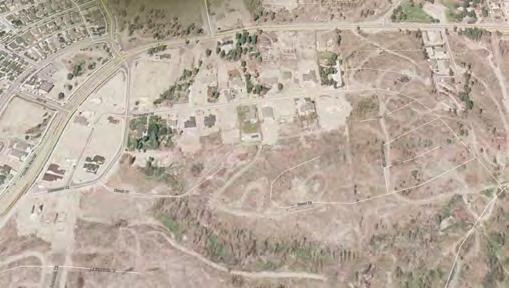B.6 Knowledge gaps and limitations of these conclusions The foregoing conclusions in Chapter 5 are limited. They either entirely miss or only tangentially address important issues that matter to the impact of the National WUI Guide on Indigenous communities. For example, people who work in Indigenous communities often point to a lack of adequate servicing and public utilities. Indigenous communities across the country face ongoing boil-water advisories, some ongoing for several decades, an example of inadequate servicing. Conditions like “if they have the right equipment” mentioned in Section B.3 are important. They matter to whether homes of Indigenous people burn down or not. They also hint at other limitations of the comparisons performed here. Studying adjacent communities helps to compare some features like house size, but it obscures the issue of what happens when resources cannot be shared. One Indigenous community might have access to the firefighting apparatus in the nearby non-Indigenous community, but a remote Indigenous community will not have the same opportunities. The present brief study did not compare Indigenous and non-Indigenous communities that were too far apart to share resources. The present study also did not address issues of repeated and prolonged emergency evacuation of residents in Indigenous communities and the disproportionate representation of Indigenous people among the displaced. These are important topics with real costs that are not covered in the current BCA approach. The present project is narrowly framed on a set of readily quantified expected present values of benefits and costs. But wildland-urban interface fires have much broader implications. They affect different populations differently. Some groups are more vulnerable to harm than others, some are more frequently affected, and some are differentially affected because they belong to a racial, ethnic, economic, or otherwise marginalized group. (For example, median income among Indigenous Canadians is about half that of the general population, so affordability may be a more serious constraint on uptake of the National WUI Guide for many more Indigenous people.) This study cannot sufficiently explore social and political issues that may affect uptake of the National WUI Guide or related measures in Indigenous communities. A better understanding of the status of Indigenous communities and their costs and benefits of satisfying the National WUI Guide would be valuable. To do so, the National Research Council could supplement this study as follows: 1. Gather a larger statistical sample of houses within and outside Indigenous communities. It may be necessary to examine the homes of Indigenous people in person since few if any appear in Zillow. 2. Use a sample of houses that better span Indigenous communities from north to south and east to west, isolated and connected, and small to large. 3. Consider renter status and how that affects whether the National WUI Guide can be practically implemented, especially on a voluntary basis. Indigenous populations might have less control of their houses because they are more likely to be renters. Landlords may have less interest in the National WUI Guide because they enjoy fewer benefits. They will probably be less likely to follow it voluntarily and more likely to resist efforts to transfer its recommendations to the building code in the future. 4. Examine in greater detail constraints on the water, electric services, and paving available in Indigenous communities, comparing them with non-Indigenous communities. 5. Identify and describe other cultural and legal constraints or opportunities that differentially affect Indigenous communities’ abilities to follow the National WUI Guide. All these tasks might be supported by engineers and other technical experts but should be directed or at least informed by representatives from Indigenous communities and by sociologists, economists, and legal experts familiar with these and closely related issues.
117








